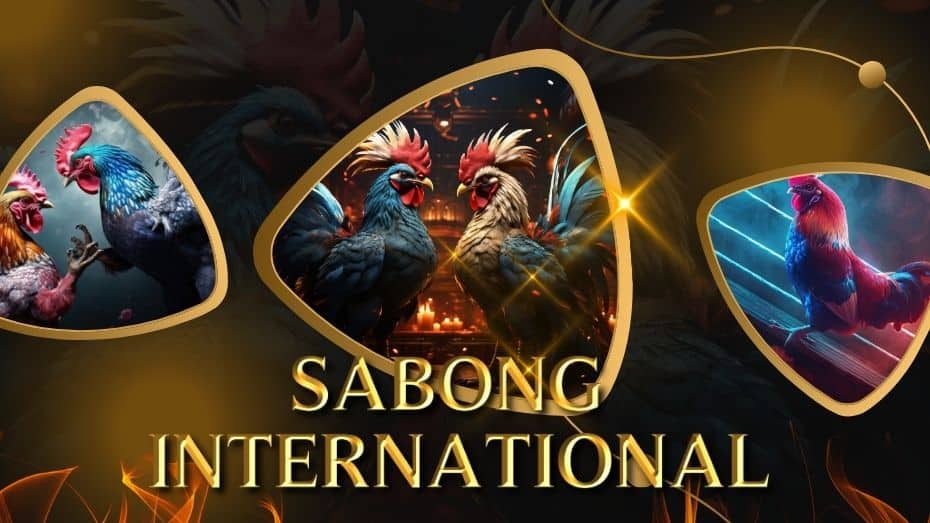Tricks of the Sabong Grandmaster: Mastering the Art of Cockfighting
The intricate world of cockfighting, especially as practiced by the Sabong Grandmaster, provides a remarkable research in the confluence of animal behavior, training approaches, and affordable strategy. To genuinely realize the nuances of this art kind, one need to discover just how the Grandmaster balances the psychological and physical aspects of rooster training while browsing the ethical factors to consider intrinsic in this conventional technique. What are the essential understandings that separate the extraordinary from the average in this realm? Understanding this can redefine one's perspective on the sport and its experts.
History of Cockfighting
As the centuries proceeded, cockfighting spread throughout various continents, adapting to social dynamics and regional customs. In middle ages Europe, it acquired popularity amongst the nobility, that concerned it as a display screen of wealth and condition. By the 17th century, the sport had developed itself in England, causing the development of formalized policies and laws.
In the Americas, specifically in the Caribbean and the Philippines, cockfighting tackled special attributes affected by colonial histories and native practices. Today, while the sporting activity continues to be debatable and faces legal challenges in many regions, its historic importance proceeds to trigger conversations concerning pet civil liberties, social heritage, and social values. The development of cockfighting mirrors broader themes of human communication with nature and the intricacies of practice.
Recognizing Fowl Actions
Recognizing fowl habits is necessary for those associated with the sport of cockfighting, as it straight affects efficiency, training, and health and wellness. Roosters exhibit a variety of behaviors that can suggest their physical and emotional states. Notably, aggression, territoriality, and social hierarchy play considerable functions in their demeanor.
Aggressiveness is an all-natural impulse in roosters, mostly driven by the need to assert prominence. Observing interactions amongst roosters can reveal their position, which is important for managing their atmosphere. A confident rooster presents an extra assertive pose, while a passive one might show signs of tension or anxiety, such as crouching or preventing eye call.

Training Methods for Champions
Efficient training techniques are crucial for developing champion roosters that master the affordable sector of cockfighting. An organized method makes certain that each bird reaches its complete potential, integrating physical conditioning with mental fortitude.
To start, developing a regular training program is essential - Sabong Grandmaster. This includes everyday exercises that enhance stamina, dexterity, and endurance. Regimens might include regulated sparring sessions with both live and fabricated opponents to simulate competition, enabling roosters to develop their battling skills in a secure environment
Incorporating agility drills, such as barrier courses and leaping exercises, considerably enhances a rooster's physical capacities. Additionally, introducing diverse surface areas and surfaces can improve their versatility throughout fights.
Mental training must not be forgotten. Acquainting the birds with the noises and sights of an affordable environment can decrease stress and anxiety on battle day. Favorable reinforcement methods, such as rewarding preferable actions, can impart self-confidence in the fowls.
Last but not least, preserving a calmness and assertive presence throughout training sessions fosters count on between the handler and the fowl, vital for attaining optimum performance. With each other, these methods form a detailed training program that cultivates champions prepared to succeed in the sector.
Health And Wellness and Nutrition Essentials

Incorporating a mix of barley, wheat, and corn offers required carbohydrates, while protein resources such as fish dish, soybean dish, or pests sustain muscle advancement and recovery. Additionally, integrating fresh vegetables and fruits can boost the total nutritional profile, offering antioxidants that increase the immune system.
Hydration is similarly crucial. Accessibility to tidy, fresh water look what i found must be a top priority, as dehydration can drastically impact performance (Sabong Grandmaster). Normal health exams are important to keep track of for any potential diseases or parasites that could endanger a fowl's problem
Moreover, the timing of feed is vital. Supplying nutrition at suitable intervals ensures that fowls keep energy levels throughout their training and recovery stages. By concentrating on these wellness and nourishment basics, sabong lovers can assist their roosters accomplish optimal performance in the competitive sector.
Approaches for Effective Matches
Success in cockfighting hinges on a combination of critical prep work and in-ring strategies. Effective suit techniques begin long prior to the fight, with careful option of the rooster. Breeders should focus on genetic traits such Discover More as resilience, aggressiveness, and stamina, guaranteeing that the selected bird shows a strong family tree of performance.
Training is crucial; fowls should be conditioned through a routine that includes exercise, sparring with other birds, and direct exposure to various settings. This prep work not just builds toughness but likewise enhances the bird's flexibility to different challengers.
Throughout the match, a trainer has to utilize eager observation and quick decision-making. Identifying the opponent's strategies enables timely modifications, such as changing the rooster's stance or motivating extra aggressive habits. When to restrain check this site out the bird or urge can imply the distinction in between triumph and defeat., timing is vital; understanding.
Last but not least, preserving a calm temperament throughout suits promotes self-confidence in the rooster. A balanced technique, integrating both psychological and physical readiness, inevitably results in successful results in the field, demonstrating that mastery in cockfighting is as much regarding technique as it is concerning the birds themselves.
Verdict
The proficiency of cockfighting, as exemplified by the Sabong Grandmaster, pivots on a detailed understanding of rooster behavior, effective training strategies, and ideal health and wellness and nutrition. Inevitably, the tricks of the Sabong Grandmaster lie in the harmonious equilibrium of these aspects, guaranteeing the proceeded tradition of this ancient sporting activity.
To really grasp the subtleties of this art type, one must discover how the Grandmaster integrates the emotional and physical elements of rooster training while browsing the ethical factors to consider fundamental in this typical method.Understanding fowl behavior is crucial for those included in the sporting activity of cockfighting, as it directly affects training, wellness, and performance.Preserving optimal wellness and nutrition is essential for making sure that roosters reach peak performance in the cockfighting sector. Supplying nutrients at appropriate intervals makes sure that roosters maintain energy degrees throughout their training and recuperation phases.The mastery of cockfighting, as exemplified by the Sabong Grandmaster, hinges on a thorough understanding of rooster behavior, efficient training strategies, and optimal wellness and nutrition.